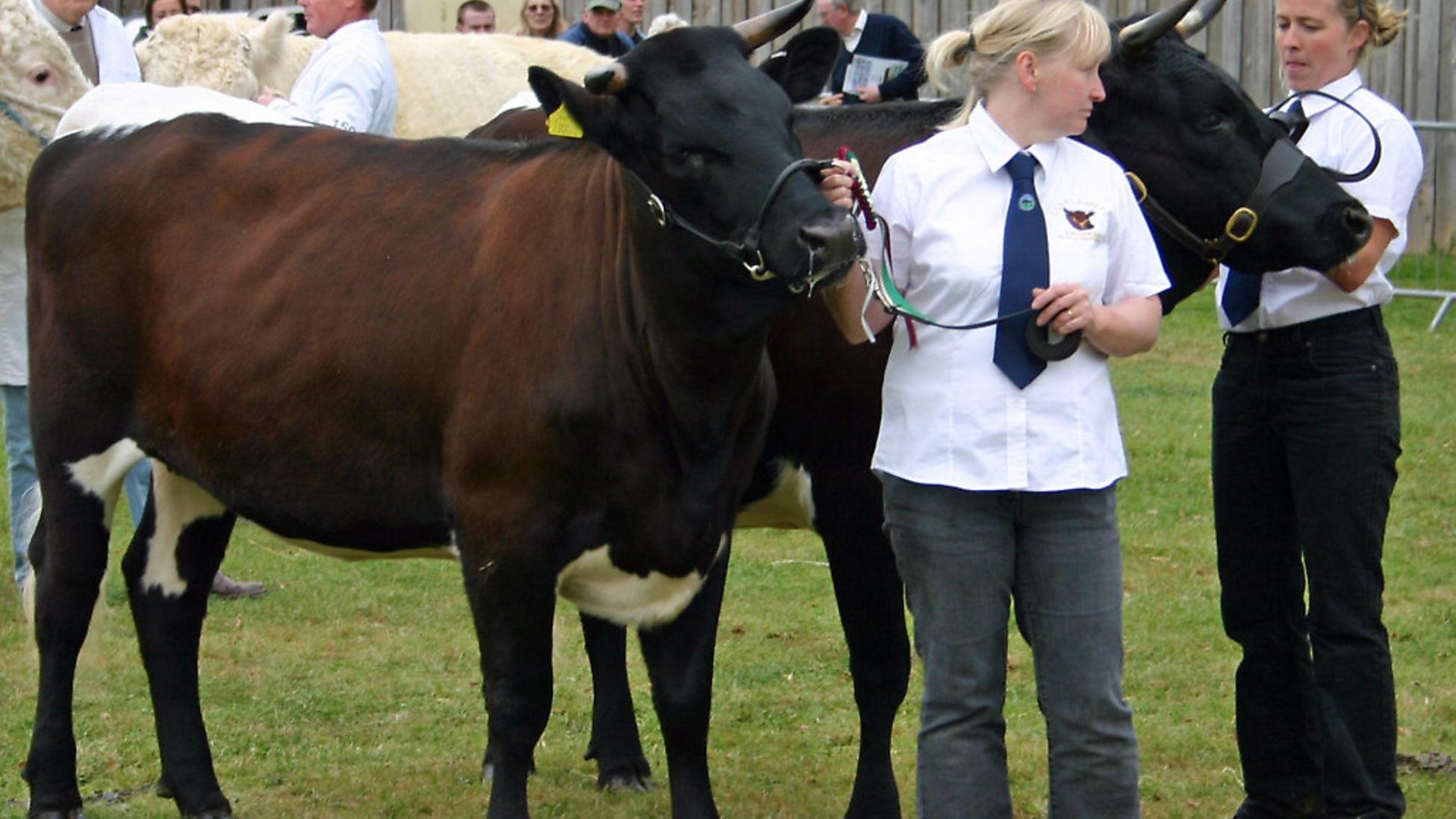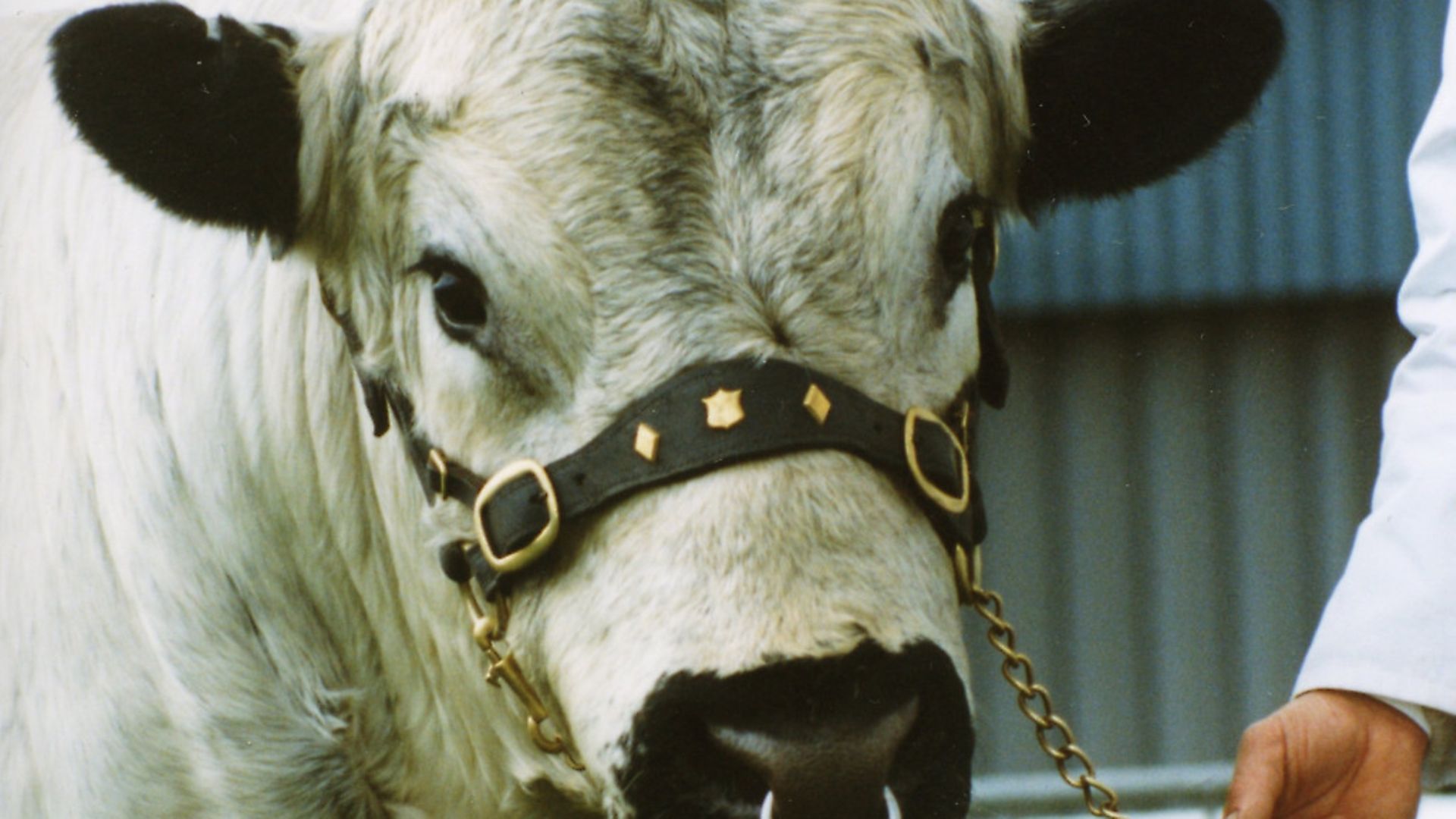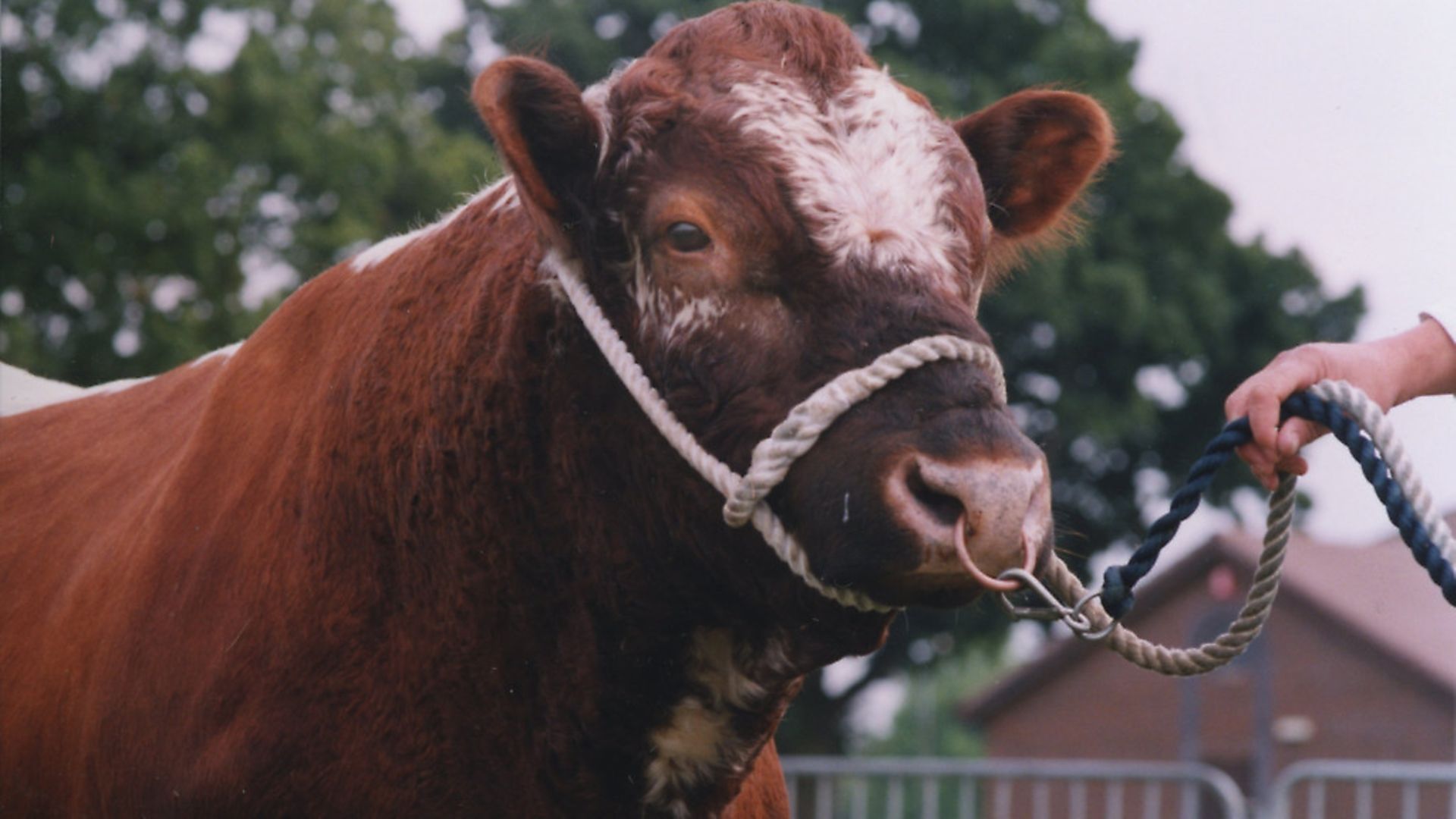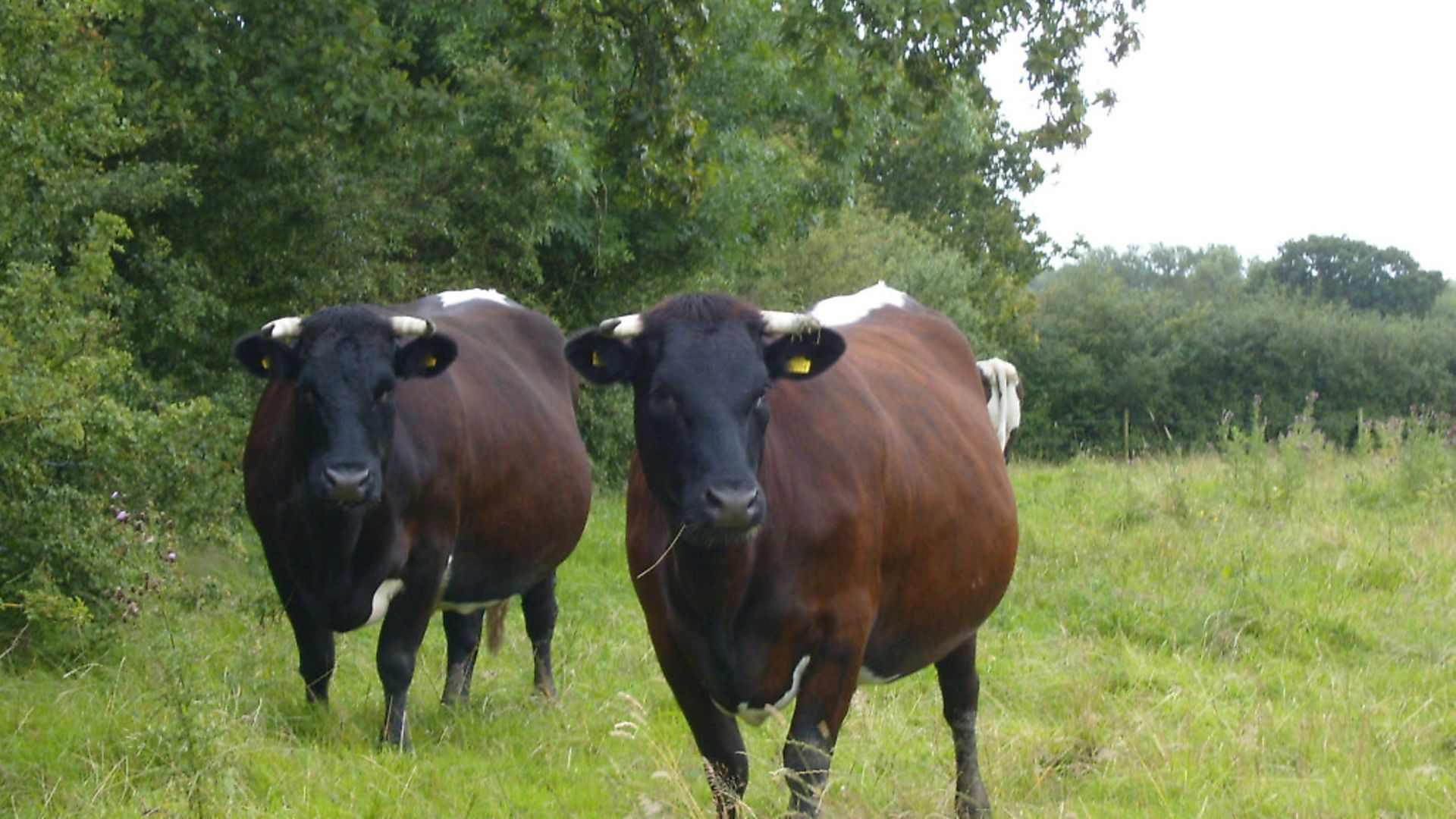If you are planning to show your cattle on the agricultural show circuit, Tom Blunt has plenty of helpful tips

As the year moves on, the agricultural show season gets into full swing, including everything from major county fixtures to smaller local events. Many breeders look forward to exhibiting, showcasing their livestock and having them judged against animals from fellow breeders.
When selecting which animal to show, you first need to look at the basic conformation, body condition and how the cow/bull walks.
The next stage is to see how the animal compares to specific breed standards which cover things like colour, size, type, horns, etc. Each breed has its own standards so it is important to research this beforehand — the first place to check is with the relevant breed society. Most set out specific rules and guidelines on how livestock should be presented.
If you are planning to attend a show, you are required to enter in advance, which can be several months before the event, so you need to plan ahead. If an animal has got particularly dirty through the winter, and to help remove the winter coat, you should start washing and brushing at least a month before the show to allow the coat to recover. This is also a good time to assess the animal’s feet as, for the show ring, most breeders have the feet professionally trimmed.

Keynote
You need to consider what TB area both your livestock and the show is in as a post- or pre-movement TB test may be required. Your vet should be able to advise you on this.
Like most things in life you learn more when you actually undertake the task. I was in the fortunate position of growing up attending agricultural shows from a young age, so I learnt that way. One of the best ways to build your knowledge is by talking to exhibitors and observing them, both in terms of their actions and the animal’s presentation. By observing and asking questions you can learn the basics required and see the different techniques people use.
Keynote
Learning about your animal and the breed is very important. Judges ask questions and each has their own approach. For young handler classes some questions you may be asked are about the breed, show preparation and even what the animal is fed on. For breed classes it is common to be asked the age and whether the animal is in calf or not.
When showing livestock it is important to ensure that the presentation of both animal and handler is at its highest level. As you lead the animal around the ring it is important to concentrate on the judge at the same time as ensuring that you are in control of your animal.

Keynote
The presentation of the handler is a key aspect to showing livestock. A clean shirt, tie and a white coat are essential. For footwear a pair of clean, sturdy boots is best.
If you are planning to show your animal then halter training is essential in the lead up so that it is controllable at the event. The best thing to do is to begin by tying up the animal before moving on to increasing handling by doing things like grooming while it is tied up. This can then progress to leading in a pen and then in an open field. Take your time when training so the animal can adjust and get used to being handled.
There are various halters you can use: nylon, cotton or leather. The most common is to use a cotton halter for training and then show in a leather one, but it all depends on personal preference. At a show you are required to have your animal double tied with a rope or strap around its neck for security in case the halter slips off.
Keynote
Ensure that the halter is on correctly otherwise you will struggle to have control. As you pull on a halter this will tighten and this section needs to be under the animal’s chin, while the leadrein will be on the left side.

There are a few essential things required when attending a show so it is handy to have a checklist to avoid items being forgotten. This should include:
? Cow’s passport
? Show exhibitor badges
? Brushes
? Feed and straw
? Water buckets
? Muck fork
? White coat
? Halters and neck ropes
On the morning of your class you would usually wash the animal but, depending on what time your class is, you may do this the evening before. You will then brush and clean the animal; as previously mentioned, each breed can be presented in a different way so check with the breed society for any guidelines and rules. Just before going into the ring a little oil can be put on the feet to give them a shine and don’t forget to attach your number — usually around the animal’s neck.
When your class begins, the ring steward will call you in. You are usually asked to enter in age/number order and the steward is there to assist the judge and to give instructions through the class.
When entering the show ring begin by walking around the outside in an anti-clockwise direction. After a few circuits you will stop and the judge will pull each animal forward for an individual inspection, which is where the judge will ask you questions. Once the judge has looked at each animal you will be asked to continue walking around the ring.
The judge will then select the order in which he/she wants to place the animals and all entrants stand in a line. Once a final decision has been made the rosettes will be given out and the judge will usually give reasons as to why he/she placed the cattle in this order. If you would like to know why your animal was placed where it was, don’t be afraid to ask as this is a good way of learning what a judge is looking for.
Importantly, remember that the result is only one person’s opinion, so it doesn’t mean that you will get the same result in front of another judge.
Meet the breed: the Gloucester
The Gloucester is one of the oldest — and rarest — of Britain’s native breeds of cattle. It is invariably described as strikingly beautiful and boasts a dark mahogany body and black head and legs. Its distinctive feature is the white stripe that extends from the small of the back, over the tail and down over the udder. The picture is completed by upswept horns which are white and tipped with black.
The Gloucester was once common across the Cotswold hills and throughout the Severn Vale and it is the source of the famed Single and Double Gloucester cheeses. In its heyday, the Gloucester was a triple-purpose breed that was used for milk and meat and as a draught animal. Another claim to fame for the breed is the fact that it was in Berkeley in Gloucestershire in 1796 that Dr Edward Jenner took the first anti-smallpox serum from a Gloucester cow called Blossom.
Handling
A stockman’s delight, the Gloucester is a docile and amenable breed that responds well to individual care. Although a horned breed, keepers of Gloucesters find no issues either from the cattle damaging each other when housed or when handling them. Even with a calf at foot, cows are not sharp mothers.
Their demeanour is generally quiet and cattle tend to stand where they are put with no overt desire to try to escape to pastures new. They also take well to hand milking and so make the ideal house cow.
Compared to modern commercial breeds, the Gloucester is medium-sized, larger than a Guernsey, but smaller than an Ayrshire.
Input
For those wanting to specialise in pasture-fed beef, the Gloucester is ideal. It is a slow-maturing breed that will finish well on grass alone and, in fact, those experienced with the breed report that there is no real advantage to feeding concentrates as this doesn’t make them finish any faster.
Bearing in mind the landscape in which the Gloucester breed evolved, this probably would not be your first choice of breed if you are hill farming with poorer quality grazing. Gloucesters are hardy and will out-winter well on lowland grazing, provided the land drains well and they have some shelter. However, on higher, more exposed ground they would need housing in the winter.
Output
Traditionally a dairy cow producing milk with a high protein and high butterfat content, the Gloucester’s flat lactation curve gives an even production of milk for up to 300 days. Both Single and Double Gloucester cheese were originally made from milk from Gloucestershire breed cows farmed within Gloucestershire. Today Single Gloucester has a Protected Designated Origin (PDO) and can only be made in Gloucestershire using milk from a dairy herd containing Gloucester cattle.
As a beef animal, the Gloucester is slow maturing, producing a lean, quality carcase with a good fine-grain marbling and excellent flavour.
Breeding and birthing
Gloucesters are renowned for breeding for 12-15 years. Twins are quite common, but a Gloucester cow has no trouble double-suckling. In terms of easy calving, Gloucesters take things up a level — one breeder whose herd has produced close to 100 calves reports that far from having to assist with a birth, he has never actually seen a Gloucester calf being born. Calves are routinely up and suckling immediately.
Health issues
The Gloucester is another of our hardy native breeds that suffers from no specific health issues. As well as being a low-input animal they are low cost in terms of veterinary attention, other than for routine testing and vaccinations.
Getting started
If you want to make a serious commitment to Gloucester cattle — or indeed any native breed — it is worth looking into membership of the breed society (www.gloucestercattle.org.uk). You can find details of Gloucester stock for sale on the Gloucester Cattle Society website and the society also holds its official show and sale at the Native and Traditional Breeds National Show and Sale held at Melton Mowbray Market each September.
For artificial insemination, the Rare Breeds Survival Trust (RBST) collects, stores and distributes semen from Gloucester bulls which can be obtained from Genus at Towcester. Some bulls are available on general sale, while others are available only to members of the breed society.
Image(s) provided by:
Archant
Archant
Archant
Archant







